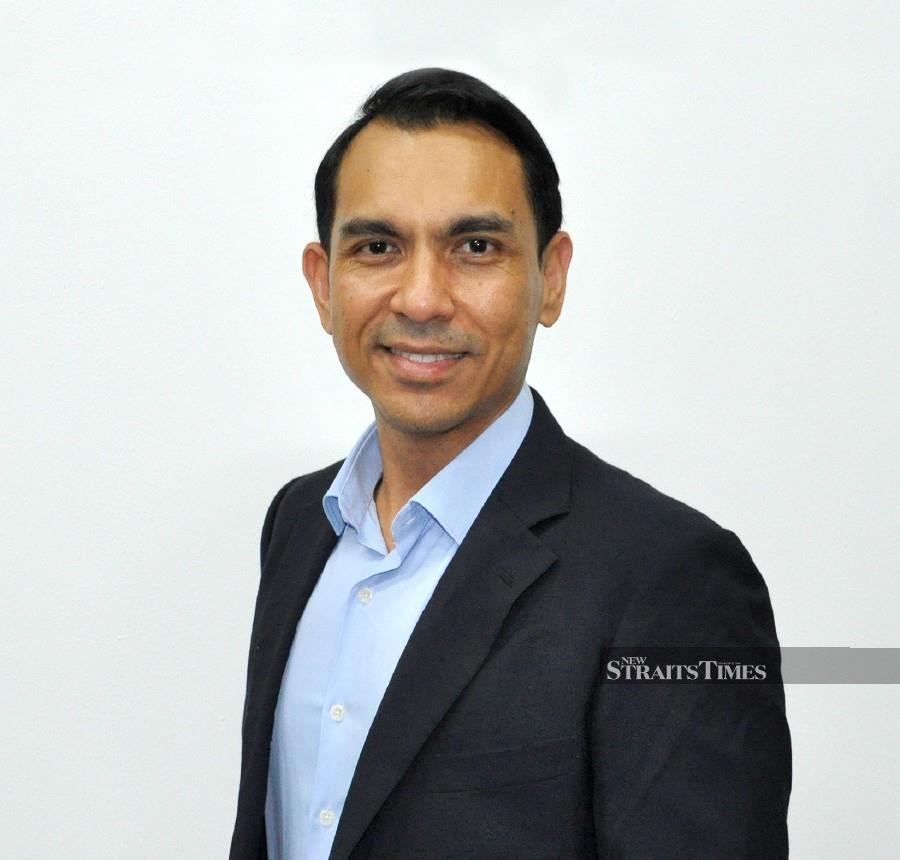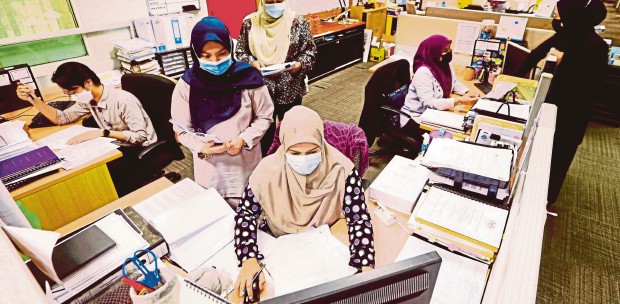THE development of smart cities has been one of the key modernisatiion efforts of the country.
According to Precedence Research, the market size for smart cities was valued at US$1,025.9 billion in 2021, and is projected to surpass US$7,162.5 billion by 2030.
"Smart cities is expected to be propelled by several key factors, including the widespread adoption of mobile devices and high-speed internet, as well as the integration of advanced technologies into various industries," said Cyberview's acting managing director, Dr Mohd Hafiz Ibrahim.
Challenges
As cities become smarter and more connected, urban mobility is one of the biggest challenges they will face.
Mohd Hafiz said rapid urbanisation and population growth will lead to higher densities, increased traffic congestion, and greater dependence on public transportation, which in turn can result in higher emissions and longer commute times.
"In addition, first and last-mile connectivity issues, pedestrian safety, and traffic management will need to be addressed to ensure a seamless and sustainable transportation system," he said.
A lack of focus on the mobility aspect in a smart city, especially in the early stages of its development, can lead to traffic congestion, and limited mobility options will lead to Malaysians experiencing transport poverty, where issues with accessibility, adequacy, affordability and travel time cause barriers in catering to activity needs.
He said addressing these complex mobility issues requires a strategic and comprehensive approach that looks into smart mobility developments and preparing infrastructure to cater for such solutions to be tested through and through before being rolled out as a solution.
Micro-mobility, e-hailing and ride-sharing
One of the ways to address the first and last-mile challenge in smart cities is through micro-mobility solutions.
"E-scooter rental apps such as Tryke offer a quick, easy, and convenient solution but will require safety provisions to be set in place," said Mohd Hafiz.
Although e-hailing services offer a convenient transportation option for many, they can also exacerbate traffic congestion in densely populated urban areas, particularly around the pickup and drop-off points. Moreover, the affordability of such services can be a concern for specific segments of the population, especially those who rely on public transportation due to financial constraints.
"Heavy traffic congestion is the root cause of the inefficiency of feeder bus networks in cities, as it frequently causes delays and reduces the frequency and reliability of services, and thus, causes erosion of confidence among commuters in their reliability," he said.
"Another innovative solution to overcome this problem is by using vans as feeder vehicles for the MRT public transport network. And in Cyberjaya, we have a company that did just that," he added.
Mohd Hafiz gave an example of Kumpool, which is a ride-sharing app that aims to offer a solution to first and last-mile travel solution. This ride-sharing app was first tested in Cyberjaya, an initiative providing a last-mile on-demand In-City shuttle that was extremely popular with the local community and achieved 198 per cent of its target ridership.
"Combining the idea of a van as a feeder vehicle for public transport and the ride-sharing aspect of Kumpool would benefit both parties while reducing traffic congestion surrounding the stations," he said.
Going fully automated
Another smart mobility solution beneficial to smart cities would be autonomous vehicles (AV).
According to Allied Market Research, the global AV market was valued at US$76.13 billion in 2020 and is projected to reach US$2.161.79 billion in 2030. These vehicles would improve road safety, be more fuel efficient, and reduce traffic congestion and emissions.
"This is why smart mobility is part of Cyberjaya's focus areas, outlined in our Masterplan launched in 2020. Currently, our smart mobility initiatives consist of air and ground mobility. In addition, the Cyberjaya Malaysia Autonomous Vehicle (MyAV) testing route, developed by Futurise and the Ministry of Transport, is central to our smart mobility ecosystem," said Mohd Hafiz.
"The seven-kilometre testing route is a live test ground equipped with a safety management plan that includes risk mitigation procedures. It is part of our National Regulatory Sandbox (NRS) initiative, aimed to expedite progressive regulatory intervention to innovation and technology solutions," he said.
Smart mobility solutions such as AVs, ride-sharing, micro-mobility and smart traffic management systems rely on smart systems, embracing AI and cloud computing, thus increasing the need for testbeds before a wider rollout.
With 5G coverage, the NRS and the MyAV testing route, the city can provide an efficient live testing ground for mobility players of all sizes to experiment, analyse and refine their technology before a national rollout to smart cities.
Taking to the skies
Smart mobility does not limit itself to the ground, as it also involves drone technology to offer solutions for both logistics and surveillance.
In a report on drone technology, Precedence Research says the global drone services market was valued at US$8.09 billion last year and is expected to grow to US$87.02 billion by 2032.
"Major growth in this relevant industry in Malaysia will be in the field of agriculture, touted to be the fastest-growing segment for drone services," said Mohd Hafiz.
The report also mentions the growth of drone training and simulation services, which will enhance the performance of pilots and provide an artificial environment to improve their hands-on experience in real-time situations.
"We have long seen this potential from the Aerodyne Group and their Agrimor app for precision agriculture. We are proud to have helped Aerodyne coming out ranked first on a list of 40 remote-sensing companies worldwide in 2021," he said.
Based in Cyberjaya, the company has benefited from the availability of the Drone Testing Zone in the city and our NRS, allowing them to test out their drone tech unimpeded by strict regulations.
At the same time, the simulation services is also represented in our city through the investments by Turkish Aerospace Industries (TUSAS), developing its Skus Advanced Trainer Aircraft flight control computer and have stated plans to expand their local team to 100 personnel.
In recent developments, Cyberview through Futurise has partnered with the Malaysian Sport Aviation Federation to manage Dronecubator, UKM's drone sports incubator programme as we look at further innovation in this sector for Malaysia.
Cyberjaya open for business
Mohd Hafiz said innovation is part of the city's DNA and we see many alignments with regard to Cyberjaya's masterplan, its progress thus far and the 'Malaysia Madani' proposition particularly on the push for innovative solutions, empowerment of tech players as well as its adoption across societies.
"With renewed emphasis by the federal government on sustainability through green and smart cities, Cyberjaya emerges as a key player, having implemented the vision of Cyberjaya as a smart city since 2017. As a pioneer smart city in Malaysia, Cyberjaya can be considered by tech entrepreneurs and trailblazers as the true testbed for their smart mobility solutions and ideas," he said.






